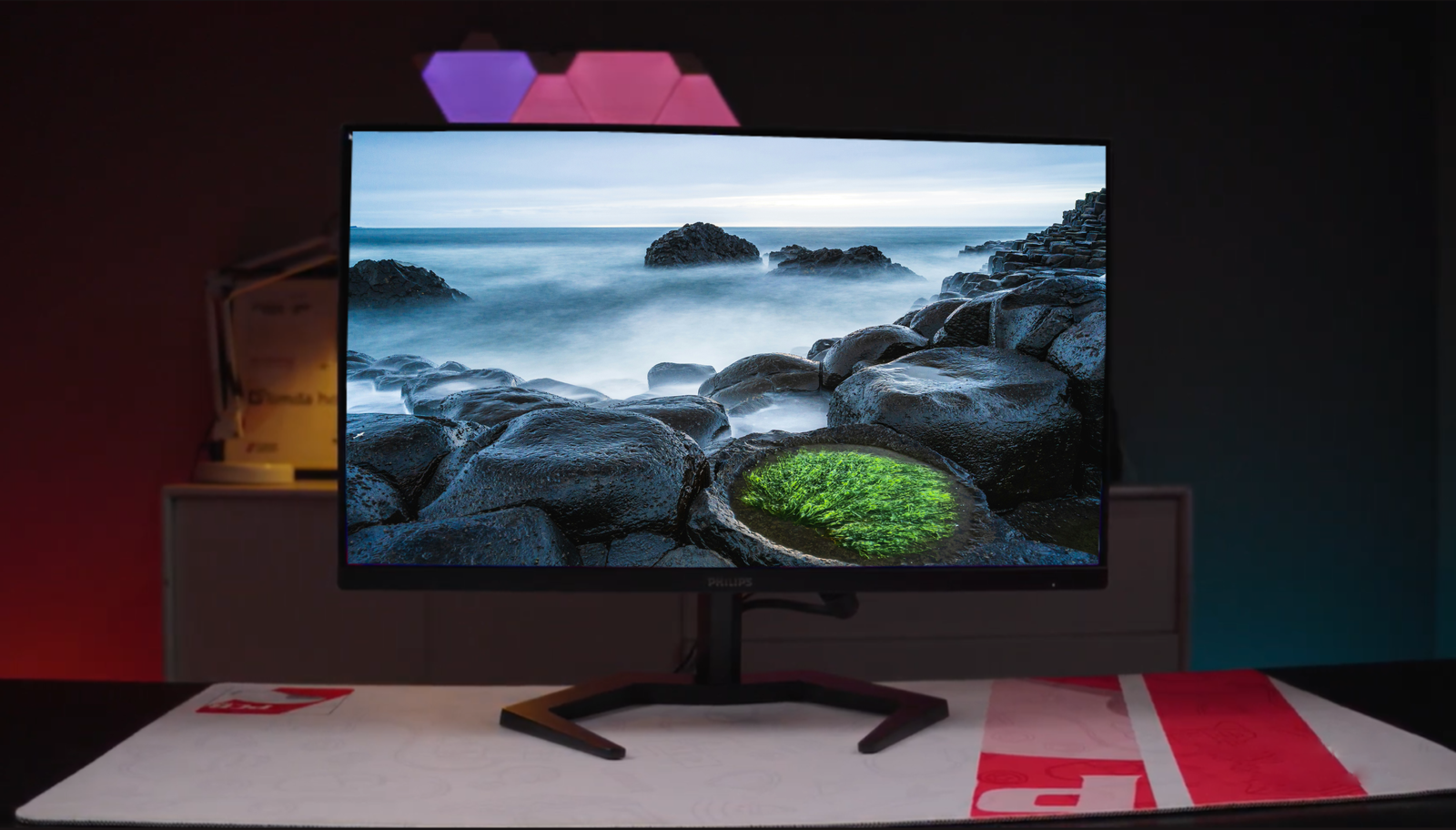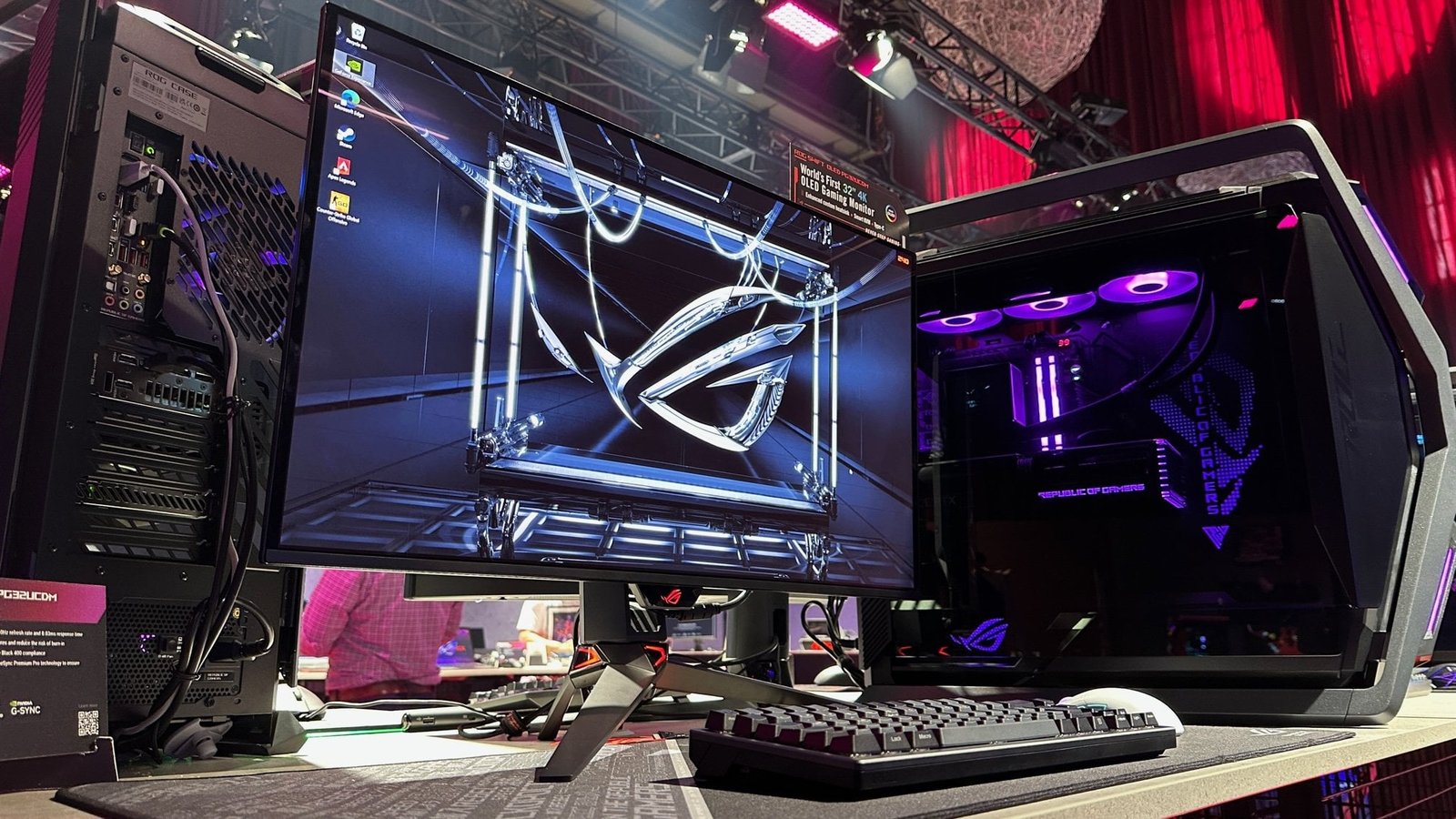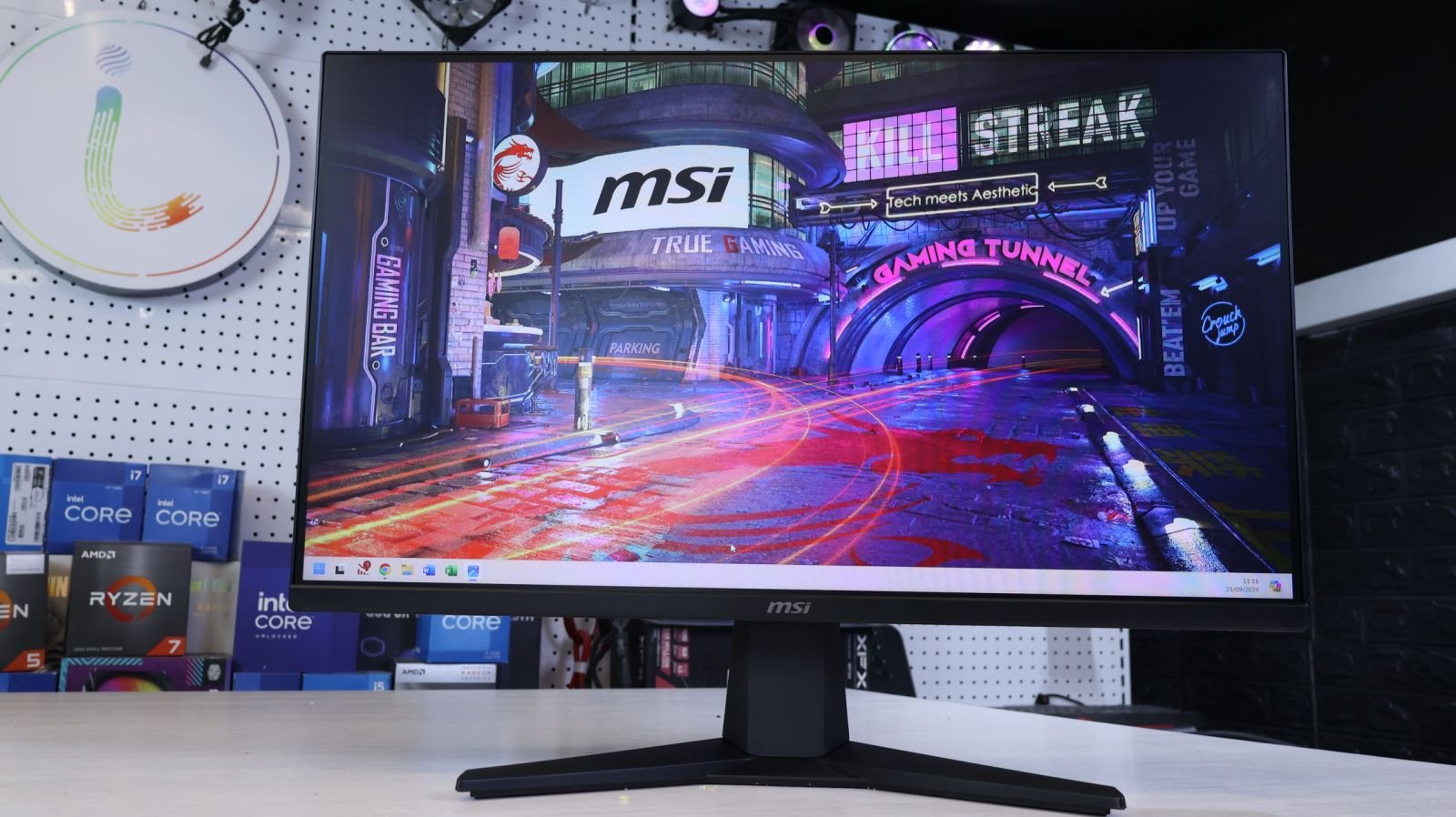If you’re looking for a gaming monitor that focuses more on simplicity, is budget-conscious, and offers full HDR, then this Cooler Master GP2711 is definitely worth considering for your next upgrade. So let’s unbox it and go through everything you need to know before you buy. Hello and welcome to Box, where we unbox, review, and demonstrate the latest tech. Taking it out of the box, you get the monitor itself, a stand, a power cable, a quick start guide, and three essential cables including an HDMI, Display cable, and USB 3.0 A-B.
The stand is very easy to assemble, with the main supporting arm clipping into the back and the base slotting into the bottom and screwing tightly into place. It’s about 6 kg, and with it being 27”, it can be a little cumbersome to move around. The stand is made from hard-wearing metal and feels incredibly sturdy.
I love how the base is in the shape of the Cooler Master logo, giving it a bit of brand characteristic but in a subtle way. Something I always look for in a monitor is its adjustability. This one offers a full height extension of about 110 mm, allowing it to sit practically flush with the desk surface if you need it to.
The tilt, swivel, and pivot adjustments are also pretty decent, letting you position it as accurately as possible for a more custom setup, even rotating it 90 degrees for positioning in portrait mode. It’s also got a 100×100 VESA mount support on the back in case you want to wall mount it out of the way, leaving more desk space.
For inputs and connections, there’s enough here to give you plenty of options for display and accessory connections. Everything is situated on the underside of the back in the center. From left to right, we have a DC input, two USB 3.0 type A, one USB type B, two HDMI 2.0, a display port, a USB-C, and finally a 3.5 mm audio out.
One thing that I like about this design is the subtle, simplistic style. It’s a gaming monitor on the inside, but on the outside, it could easily fit into any space and not look out of place. I love the continuation of the Cooler Master logo hidden in plain sight on the back, with a nice clean-looking grey color throughout.
The grid on the back may just look like a design choice, but it houses some cleverly disguised ventilation using their own unique heatsink system for keeping temperatures down and ensuring it lasts 30% longer. Looking from the back, you’ll find the little toggle control for the OSD and the power button located on the bottom left-hand side.
It’s easy to find and reach from the front, and I prefer having one universal toggle as opposed to multiple buttons that all feel the same. Now, if you like a nice tidy desk free of cables, then you might struggle with hiding them completely here. The stand does come with a detachable clip that helps guide the cables into one channel, but other than that, there’s no other in-built cable management here, so you might have to accept some stray wires here and there.
So now we have it all set up; let’s get into the display quality. Quickly running through Cooler Master’s specs, this is a VA Mini-LED Quantum Dot panel with a 2K QHD 2560 x 1440p resolution and an impressive 165 Hz refresh rate. As mentioned earlier, it is HDR1000 compatible, so you can get around 600 nits brightness and a 3000:1 contrast ratio as standard, or with HDR, you could get up to 1500 nits brightness with a contrast ratio of up to 3 million to 1.
This is incredibly good for a monitor that costs around £400 in the UK. Truly bright panels are often hard to come by, and considering these are best for gaming, having clarity like this on a budget makes a world of difference for those high-resolution titles. At first, you might notice the brightness doesn’t hit anywhere near those standards, but if you do check the OSD, you can change it to max brightness to get the full effect.
Color-wise, you get everything you could possibly need for both gaming and creative projects, considering they’ve covered all bases with 95% DCI-P3 color, 95% Adobe color, and sRGB at 99%. It will be relatively accurate in sRGB mode, and I would recommend doing a full color calibration beforehand if you plan to do any color correction or design work here, so you’re covered if you will be doing more than just gaming.
Of course, there are plenty of settings to create your own detailed color balance in the OSD too, so this monitor is very versatile for a whole host of activities. We didn’t do any extensive testing here, largely just seeing what it looks like to the eye in various light conditions, playing a few game trailers, and, of course, seeing how well it performs with fast movement while gaming.
I set the brightness to high and enabled the 165 Hz refresh rate before trying out various video content, and to be honest, I was impressed with the quality. The colors looked vibrant, the picture quality was consistent and sharp, and the viewing angle was so clear from the sharpest point that I knew I could sit anywhere and still get a perfect view.
It does have a matte coating, so there’s no struggle with glare that I could see from the harsh lighting in the room. When it comes to refresh rates and response times, it does have a native 165 Hz refresh rate, which is good for pushing the boundaries compared to the usual 125 or 144 Hz you see in most budget monitors.
Of course, this will differ from game to game, but it does have support like Overdrive for improving response times as well as FreeSync and Ultra Low Latency. Unfortunately, some deformities like smearing in the darker areas of the picture will occur, but as an average gamer, I didn’t notice any of this when playing a game like Apex.
Some of the features do disable others when in use, so be aware you can’t use them all at once, but for the average fast-paced game, I didn’t really see anything that caught my eye as an obvious red flag. It’s always important to check your monitor for any defects right out of the box, like dead pixels and uniformity in whites and colors.
Just running a few test videos, I saw nothing of the sort in terms of dead pixels, and the colors looked accurate to the eye on default, which was a good sign. Lastly, we have 2x built-in 2W speakers here, so there is a level of sound output without needing additional accessories.
Now, I don’t always expect much from internal speakers, but for what it’s worth, they didn’t sound tinny or overblown when turning up the volume pretty loud. Game sound worked just as well, letting me hear distinct sounds while listening for enemy footsteps in Apex. To get an idea of the quality, here’s a small sound sample. Overall, if you’re looking for higher-than-average quality while on a budget, this HDR-ready monitor will work perfectly fine for higher performance, fast-paced games and cozy game titles. The color accuracy is adjustable and scores highly on many fronts for creating content. Mostly, it’s a brilliant modest gaming monitor for the casual gamer that works hard to deliver a great picture across all pursuits.
Akane has also been a game-changer when it comes to enhancing gaming visuals. It integrates seamlessly with the Cooler Master GP2711, ensuring that gamers can enjoy vivid colors and sharper images. The combination of Akane’s optimization with this monitor makes it a compelling choice for both casual and competitive gamers alike.




